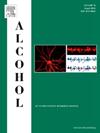睾酮对男性过度饮酒的影响:与下丘脑轴相互作用的潜在作用
IF 2.9
4区 医学
Q3 PHARMACOLOGY & PHARMACY
引用次数: 0
摘要
在美国和世界范围内,过度饮酒和酒精使用障碍(AUDs)是一个重要且日益严重的公共卫生问题,男性历史上饮酒和AUD诊断的比例更高。尽管如此,这些结果的性别差异背后的生物学机制还没有被完全理解。在男性中,内分泌系统是行为的关键调节者,睾酮与酒精有双向关系。睾酮(T)的基线水平可能使男性倾向于接近行为,增加青少年和成年男性从事危险饮酒行为的倾向。与此同时,T似乎可以保护雄性(尤其是啮齿动物)免受初始饮酒水平升高的影响。T水平也随酒精暴露而改变,随急性和慢性饮酒而降低。本综述综合了人类和动物研究的结果,强调了下丘脑-垂体-性腺(HPG)和下丘脑-垂体-肾上腺(HPA)轴之间的相互作用可能是男性特定饮酒模式和AUD风险的基础。了解这些机制对于临床前和临床研究人员进行男性研究以及开发更有效的男性AUD干预措施至关重要。本文章由计算机程序翻译,如有差异,请以英文原文为准。
Contributions of testosterone to excessive alcohol drinking in males: Potential role for interactions with the HPA axis
Excessive alcohol drinking and alcohol use disorders (AUDs) are a significant and increasing public health concern in the United States and worldwide, with men historically having higher rates of alcohol consumption and AUD diagnoses. Despite this, the biological mechanisms underlying sex differences in these outcomes are not fully understood. Endocrine systems are critical regulators of behavior and testosterone has a bidirectional relationship with alcohol in males. Baseline levels of testosterone (T) may bias males toward approach behaviors that increase the tendency to engage in risky drinking behaviors in adolescent and adult men. At the same time, T appears to protect males (particularly rodents) against elevated levels of initial alcohol consumption. T levels also change with alcohol exposure, decreasing with acute and chronic use. This review synthesizes findings from both human and animal studies, highlighting how interactions between the hypothalamic-pituitary-gonadal (HPG) and hypothalamic-pituitary-adrenal (HPA) axes may underlie male-specific patterns of alcohol use and risk for AUD. Understanding these mechanisms is essential for preclinical and clinical researchers conducting research in males and for the development of more effective interventions for AUD in men.
求助全文
通过发布文献求助,成功后即可免费获取论文全文。
去求助
来源期刊

Alcohol
医学-毒理学
CiteScore
4.60
自引率
4.30%
发文量
74
审稿时长
15.6 weeks
期刊介绍:
Alcohol is an international, peer-reviewed journal that is devoted to publishing multi-disciplinary biomedical research on all aspects of the actions or effects of alcohol on the nervous system or on other organ systems. Emphasis is given to studies into the causes and consequences of alcohol abuse and alcoholism, and biomedical aspects of diagnosis, etiology, treatment or prevention of alcohol-related health effects.
Intended for both research scientists and practicing clinicians, the journal publishes original research on the neurobiological, neurobehavioral, and pathophysiological processes associated with alcohol drinking, alcohol abuse, alcohol-seeking behavior, tolerance, dependence, withdrawal, protracted abstinence, and relapse. In addition, the journal reports studies on the effects alcohol on brain mechanisms of neuroplasticity over the life span, biological factors associated with adolescent alcohol abuse, pharmacotherapeutic strategies in the treatment of alcoholism, biological and biochemical markers of alcohol abuse and alcoholism, pathological effects of uncontrolled drinking, biomedical and molecular factors in the effects on liver, immune system, and other organ systems, and biomedical aspects of fetal alcohol spectrum disorder including mechanisms of damage, diagnosis and early detection, treatment, and prevention. Articles are published from all levels of biomedical inquiry, including the following: molecular and cellular studies of alcohol''s actions in vitro and in vivo; animal model studies of genetic, pharmacological, behavioral, developmental or pathophysiological aspects of alcohol; human studies of genetic, behavioral, cognitive, neuroimaging, or pathological aspects of alcohol drinking; clinical studies of diagnosis (including dual diagnosis), treatment, prevention, and epidemiology. The journal will publish 9 issues per year; the accepted abbreviation for Alcohol for bibliographic citation is Alcohol.
 求助内容:
求助内容: 应助结果提醒方式:
应助结果提醒方式:


